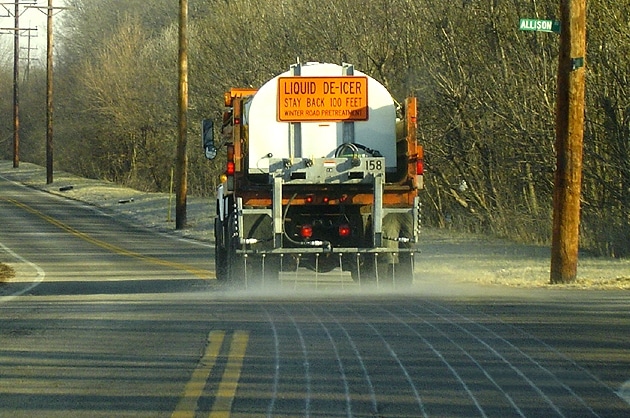A draft discussion paper [pdf] from the New York State Department Of Transportation (NYSDOT) projects costs that unconventional gas and hydraulic fracturing (fracking) will have on state transportation infrastructure.
New York already ranks near the bottom of the 50 states with regards to bridge and pavement conditions. Considering this fact, the discussion paper should be treated as a warning sign. NYSDOT’s draft Transportation Impacts of Potential Marcellus Shale Gas Development describes the effects of drilling as “ominous,” requiring the reconstruction of hundreds of miles of roads and numerous bridges. As well, safety and operations improvements in many other areas will be required.
The paper pegs the costs to transportation infrastructure as totaling up to $378 million:
“The annual costs to undertake these transportation projects are estimated to range from $90 to $156 million for State roads and from $121-222 million for local roads. There is no mechanism in place allowing State and local governments to absorb these additional transportation costs without major impacts to other programs and other municipalities in the State.”
There are currently 58 gas drilling permit requests pending approval with the New York State Department of Environmental Conservation (NYSDEC). In all, more than 7,000 wells are expected to be drilled in the Marcellus Shale and peak annual drilling could surpass 1,200 wells.
The NYSDOT estimates that exploiting unconventional gas may lead to an additional 36,000 trips/hour during peak hours (+/- 15 percent), and during peak years an extra 1.5 million heavy truck trips. The impact of these figures is put into perspective when the report says that “an old rule-of-thumb is that pavement structural damage done by the passage of a single large truck is equivalent to that done by about 9,000 automobiles.”
Assuming significant drilling moves forward, the report recommends several approaches to averting the probable impacts that unconventional gas operations will have on the state’s transportation infrastructure:
One option would be to dedicate some share of the gas tax revenues from gas production to mitigate the transportation and other impacts of such development;
A second option might be to levy a “transportation impact fee” for each well drilled in the Marcellus in New York at the time of permitting;
A third option would be to require the establishment of an “industrial association” specifically charged with mitigation of the cumulative impacts of Marcellus Shale development;
A fourth option might be to require a transportation mitigation surcharge on gas production in the Marcellus;
Finally the Department might do nothing, assuming that future increases in its budget will offset the incremental costs of mitigating the transportation impacts of Marcellus development.
The costs to transportation infrastructure will be disproportionately high given that much of the investment will be required upfront in order to service the gas play. As well, it is worth noting that few of the proposed unconventional gas wells will have a productive life span of more than 15 years.
The assessment of transportation impacts from developing unconventional gas coincides with the NYSDEC’s July release of its preliminary revised recommendations [pdf] on the environmental impacts from high-volume fracking to develop the Marcellus Shale. That report aims to put in place the ‘safe’ conditions for the exploitation of around 85 percent of the Marcellus.
Specific measures the NYSDEC has identified in order to protect the state’s drinking water include prohibiting surface drilling:
• within 2,000 feet of public drinking water supplies;
• on the state’s 18 primary aquifers and within 500 feet of their boundaries;
• within 500 feet of private wells, unless waived by landowner;
• in floodplains;
• on principal aquifers without site-specific reviews; and
• within the Syracuse and New York City watersheds.
Former governor David A. Paterson placed a de facto moratorium on fracking last year, but newly elected governor Andrew Cuomo will not extend the ban since he supports the use of unconventional gas as a reliable energy source [pdf].
“Safely” exploiting unconventional gas was again called into question recently after the release of an Environmental Protection Agency report stating that fracking had poisoned water supplies. Not only will drilling in New York risk the state’s water, but this internal NYSDOT discussion paper points to how drilling will cost millions of dollars in infrastructure damage and repair, for short term gains.
Access the Draft Discussion Paper, Transportation Impacts of Potential Marcellus Shale Gas Development [pdf].
Subscribe to our newsletter
Stay up to date with DeSmog news and alerts






